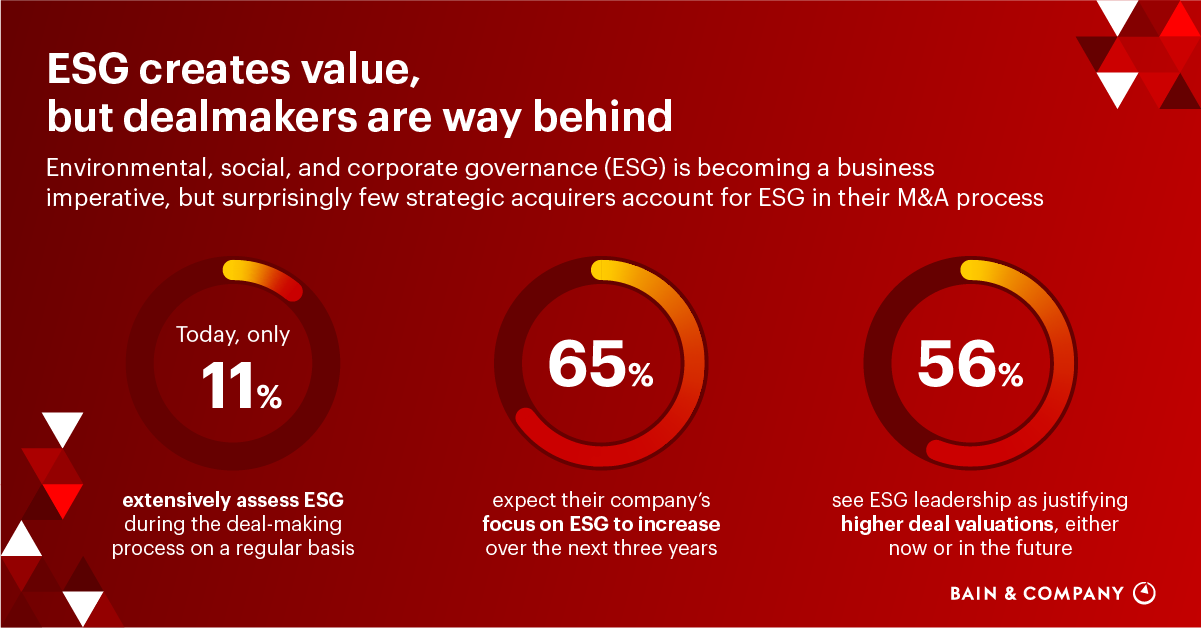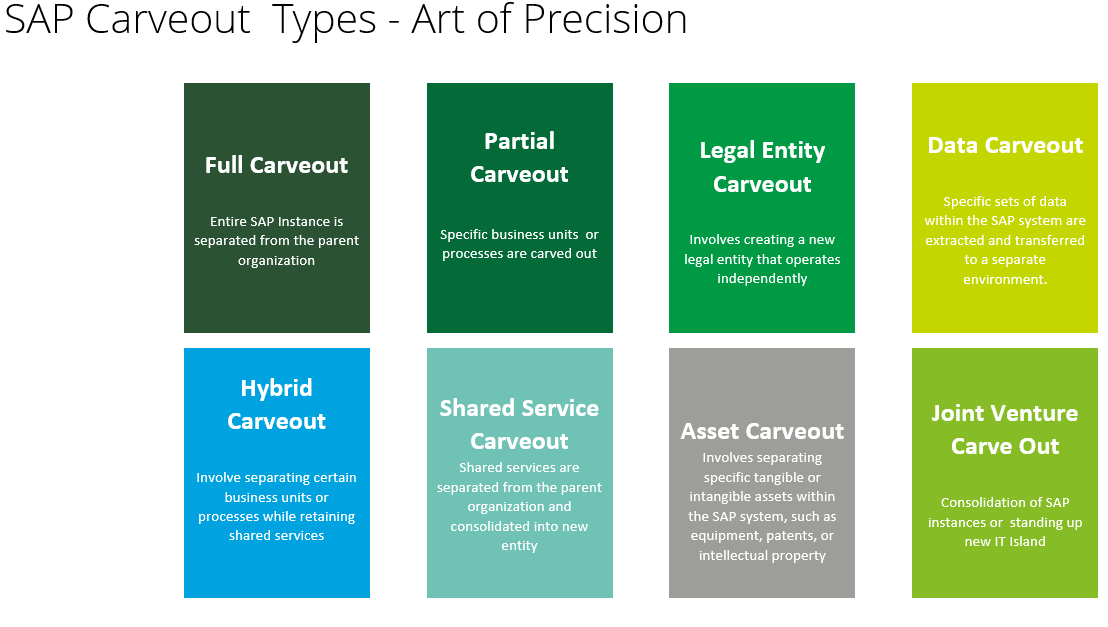
- SAP Community
- Groups
- Interest Groups
- Sustainability
- Blogs
- Embedding and Managing ESG Due-Diligence Metrics i...
- Subscribe to RSS Feed
- Mark as New
- Mark as Read
- Bookmark
- Subscribe
- Printer Friendly Page
- Report Inappropriate Content
Introduction
In the midst of unprecedented economic and geopolitical disruptions, coupled with the advancements of Gen AI and hyper-automation innovations, many companies are turning to M&A as a means to improve cash flows and increase revenues. This approach allows them to unlock future value creation at a faster pace by buying rather than building from scratch.
According to the New York Times, deal makers are eagerly looking forward to 2024, as 2023 proved to be a challenging year. The biggest headwinds for deal making in 2024 are expected to be geopolitical factors, as highlighted by Viswas Raghavan, the co-head of global investment banking at JPMorgan Chase.
As per Bain and Consulting, progressive companies integrate sustainability into all their transactions and use their corporate priorities as a yardstick to assess potential deals. This approach enables them to identify assets that not only align with their current ESG initiatives but also create economic value. By connecting their ESG strategy with M&A activities, these companies strategically acquire assets that support their sustainability objectives while simultaneously driving financial prosperity.

The Big Elephant in the Room
As we are aware, M&A activities present a remarkable opportunity for ESG to establish an ambitious and innovative target operating model that enhances the triple bottom line. However, buyers and sellers often face challenges in prioritizing short-term value due to time constraints, cost pressures, and limited understanding of existing processes, systems, data, and interfaces. It is crucial to recognize that during M&A transactions, there is a need to thoroughly discover and carve out the entire IT landscape, including complex ERP systems like SAP. By addressing these challenges and gaining a comprehensive understanding of the IT infrastructure, organizations can effectively leverage M&A opportunities to drive sustainable growth and maximize long-term value.
Additionally, there is always high complexity in M & A projects as they are highly secretive during the pre-due diligence that doesn't help either as business and IT, SAP teams don't clearly understand end to end objectives of M & A until later stages. Hence, a lot of M & A carve outs end up like a redundant mirror of either buyer or seller IT landscape or seller acquiring a company that either can result in ESG reputational risk or a lot of money to build sustainability elements and bring it in line with buyers long term vision.

The Big Elephant, SAP Secret Santa and The Path
The metaphor of the elephant and the rider is used by social psychologist Jonathan Haidt in his books The Happiness Hypothesis and The Righteous Mind to represent how humans think.
The elephant portrays uncontrolled, intuitive and emotional thought processes. The rider represents more logical, controlled and analytical thinking.
To put this metaphor into the context of the blog, what am saying is there is a mechanism to drag the big elephant ( M & A deal dynamics) into the right path using SAP as the rider for different carve out types below if we embed the right ESG and Innovation value outcomes and objectives and deal risk/reward metrics into the deal business case and contracts and manage this through out the M & A programme(i.e Prior, Post and Ongoing M & A management) from pre-deal due diligence to Day 0/Day 1/Day 2 (i.e Buyer Company and Target Company are fully integrated with transition services completed).

What is 3 Step glide path that companies can take with the Elephant and Rider?
Step 1 : The initial crucial step is to evaluate the unique business context and end-to-end business model of the deal. Factors such as ethical considerations, legal implications, operational aspects, reputational concerns, political pressures, investor expectations, customer demands, peer company actions, and brand enhancement opportunities may vary for each deal. It is essential to incorporate these factors into the deal roadmap as relevant. It is important to recognize that ESG material risks differ across industries. Therefore, comprehending the impacts on both the buyer and seller's business models is vital. For instance, the Energy and Utilities industry may face significant environmental risks related to carbon emissions, pollution, and climate change impact, while the Manufacturing and Industrial industry may encounter risks associated with waste management, pollution, and resource depletion.
Step 2: The next step is to envision the new customer journey, processes , systems, data and interfaces that are required to achieve the regulatory, financial, ESG and innovation outcomes using tools like SAP Signavio , AI , Hyper-automation and comparing and contrasting with existing As-Is Processes and IT landscape[Buyer or Seller] if required and linking it to process mining/insights if we want to mirror the existing landscape and enhance it for new business operating model.
Step 3: As we all are aware, one of the most challenging aspects of M&A is managing "People and Culture" and effectively navigating change. It is crucial for the success of an M&A program. While it is important to have ambitious goals, it is equally important to be realistic. Therefore, it is necessary to efficiently phase and prioritize all the changes(ex: A two tier SAP S/4 HANA Public Cloud Strategy), employing a tiered approach with strategies and actions based on priority levels (must-do's and nice-to-do's) especially at ESG changes in SAP processes. This allows for scalability of the plan, depending on budget constraints and the willingness of executives to embrace change and costs.
Sustainability Due-Diligence Checklist
While the below is not an exhaustive check list, it should give an example of elements that we should focus on during the pre-due diligence and IT carve out.

- SAP Managed Tags:
- Sustainability
You must be a registered user to add a comment. If you've already registered, sign in. Otherwise, register and sign in.
-
Banking
1 -
BTP for Sustainability
2 -
Circular Design
1 -
Circular Economy
1 -
Compliance
1 -
CSRD
1 -
EPR
1 -
ESG
1 -
ESRS
1 -
Financial Services
1 -
Insurance
1 -
Packaging
1 -
PCAF
1 -
Picking Strategy
1 -
Plastic Taxes
1 -
Recyclability
1 -
SAP Analytics Cloud
1 -
SAP Cloud for Sustainable Enterprises
1 -
SAP Community
1 -
SAP Datasphere
1 -
SAP Profitability and Performance Management
1 -
SAP Responsible Design and Production
1 -
SAP SCT
1 -
SAP Sustainability Control Tower
2 -
SAP Sustainability Footprint Management
1 -
SCT
1 -
Sustainability
1 -
Sustainability Control Tower
1 -
Sustainable Finance
1